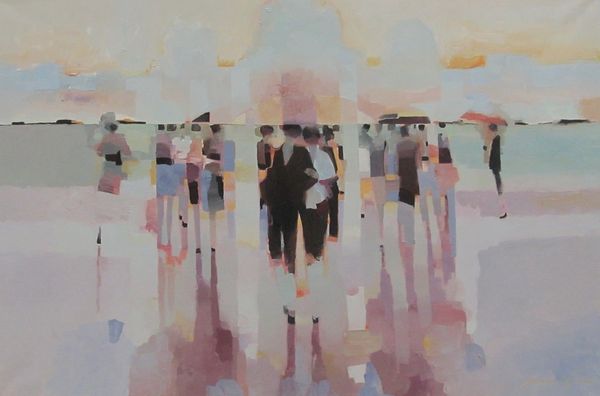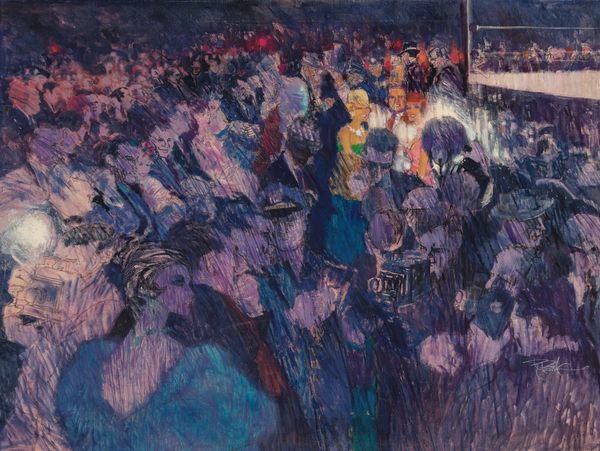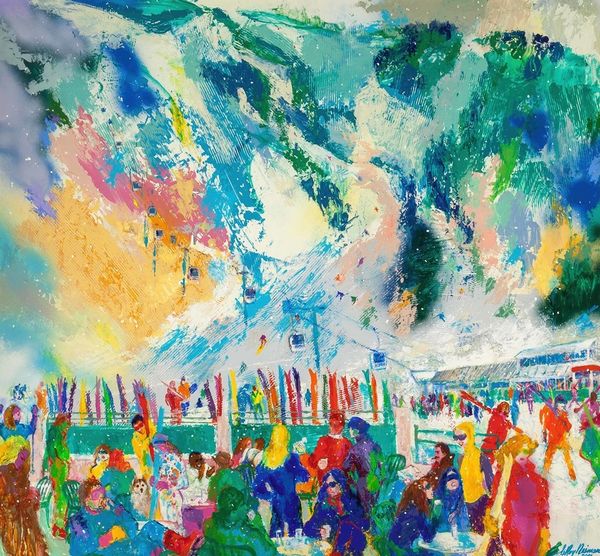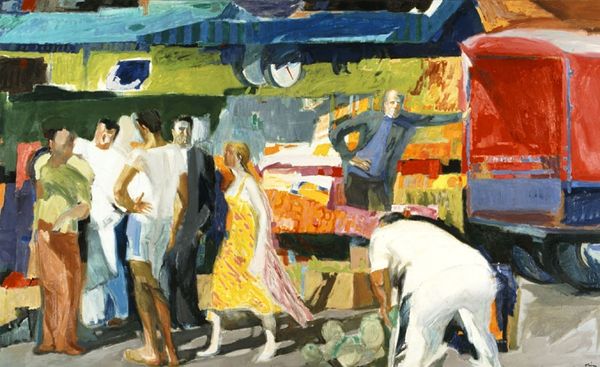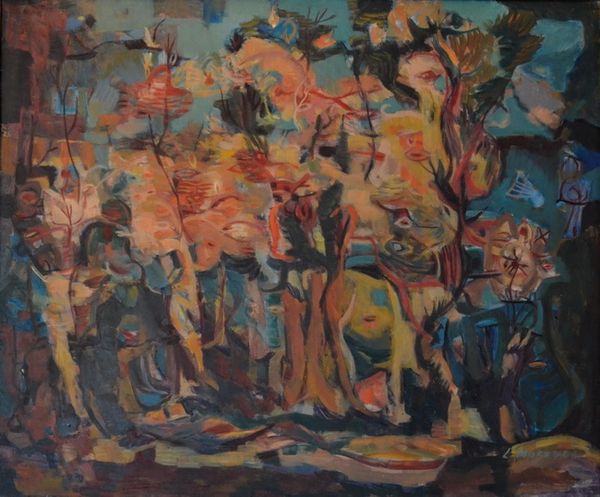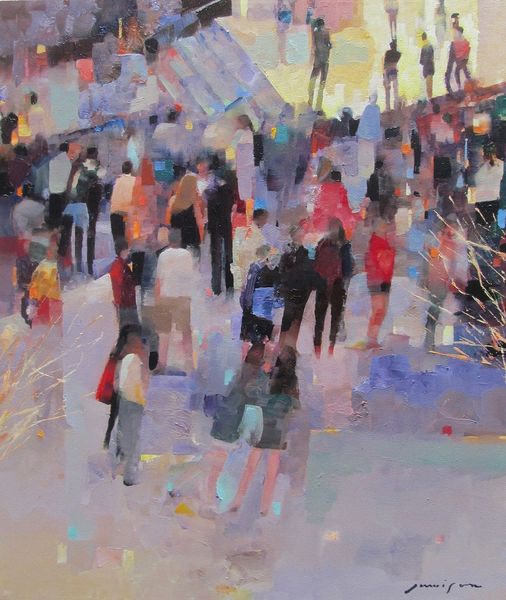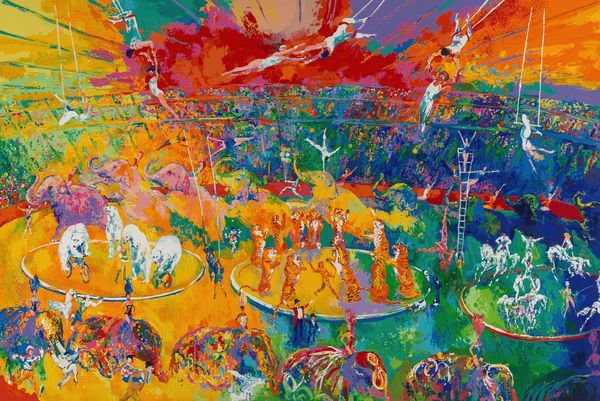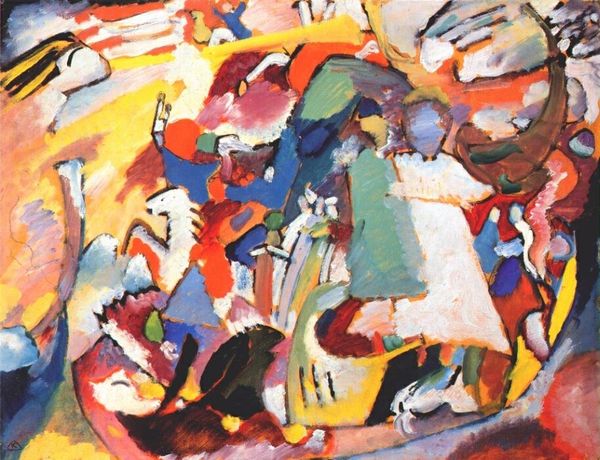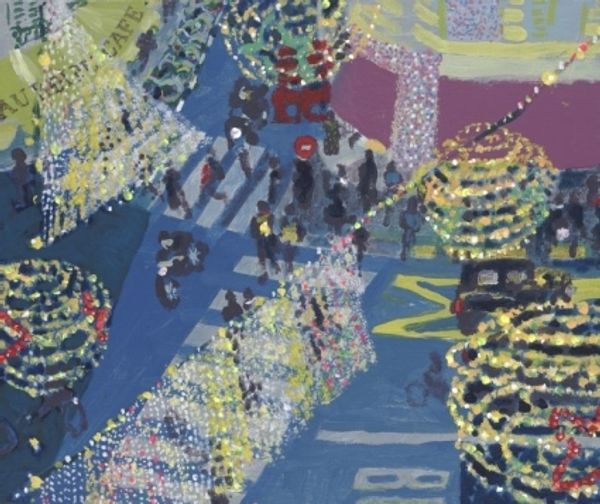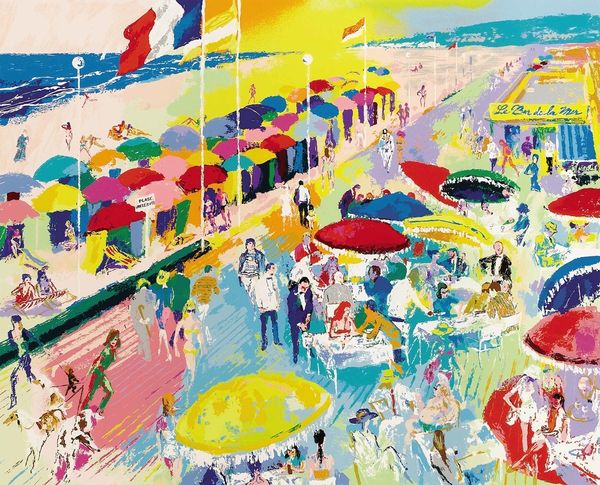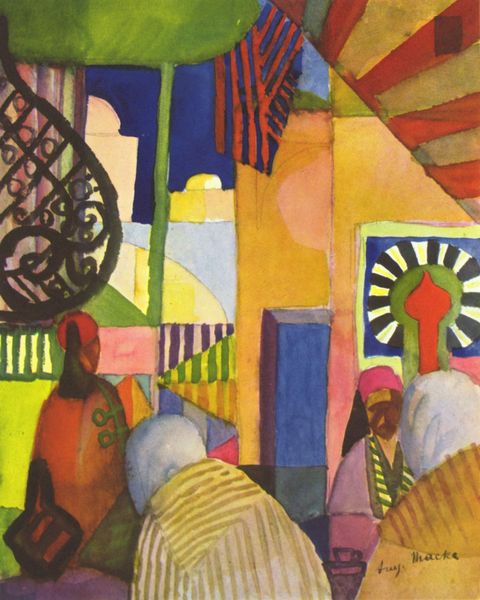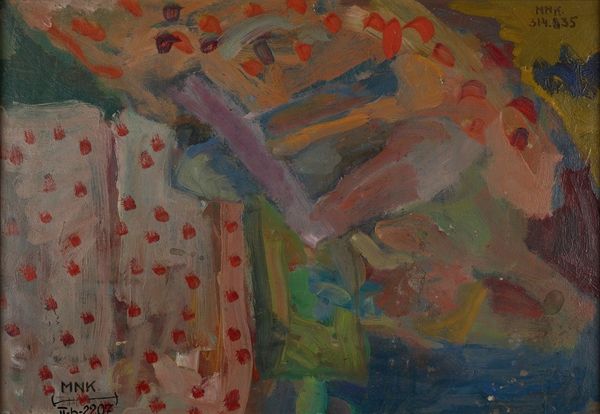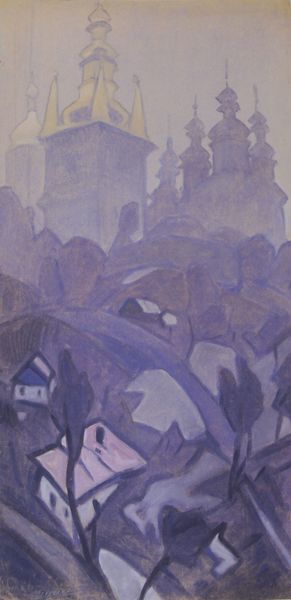
painting, acrylic-paint, impasto
#
painting
#
canvas painting
#
landscape
#
impressionist landscape
#
acrylic-paint
#
figuration
#
handmade artwork painting
#
impasto
Copyright: Public domain
Editor: Here we have "Hawaiians" by Arman Manookian, painted with acrylic in an impressionistic style. I’m immediately struck by the thick impasto paint and the blend of warm and cool tones; the clouds feel both soft and almost heavy at the same time. What story does the materiality of the painting tell you? Curator: I see a direct connection between the materials and Manookian’s cultural context as an Armenian artist working in Hawaii in the early 20th century. The impasto and acrylic, the very texture of the paint, speaks to the physical labor involved in its creation. He isn't just depicting a scene, but constructing an idealized version of Hawaiian life. What sort of labor do you imagine was part of Manookian's experience when he created the image, as he worked? Editor: I hadn't considered the actual work involved in laying down the paint. You’re right; it's a tactile process, demanding both skill and time, giving this image an almost craft-like quality. It's quite different than a smooth, polished academic style that may have been prized at the time. But how does that tie into the "idealized version" aspect? Curator: Look closely at how Manookian uses the thick paint to depict the figures and landscape. It creates a sense of abundance and leisure, reflecting how early tourism to Hawaii might romanticize island life, obscuring the complex social and economic realities, right? The way he’s building this scene, layer upon layer, is both literally and figuratively constructing a version of Hawaii for consumption. Editor: So you're suggesting that even the *way* the painting is made contributes to the overall message? That the very act of using that much paint points to abundance, maybe even overabundance? Curator: Precisely! The materiality reveals the labor, and that labor contributes to building this romantic image tied to a developing tourism economy. It makes you consider what Manookian’s own role was in promoting this image through the materials he manipulated. What do you take away now when viewing the work as a whole? Editor: It definitely highlights the way art making itself isn't a neutral process; even the paint choices are imbued with the culture. That opens up an interesting angle! Thanks for sharing this take!
Comments
No comments
Be the first to comment and join the conversation on the ultimate creative platform.
